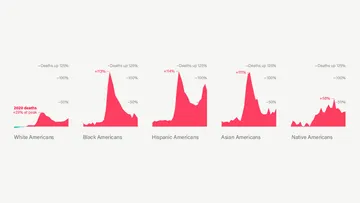When Julia Rendleman started taking pictures at the Chesterfield County Jail outside of Richmond, Virginia, last year, she knew she wanted to depict the opioid crisis in a different way from stories she had seen before. “I think we have seen the images of needles searching for veins and people in very sad circumstances, living on the streets or prostituting. Some call this ‘needle porn.’ I don’t have any pictures to add to that sort of reporting,” she said. Instead she photographed two sisters in a jail recovery program that helps inmates and former inmates identify alternatives to drug use. Rather than depicting the experience of people suffering from addiction in a uniform way, Rendleman highlights the sisters’ individual stories.
Over four months, Rendleman photographed Tera Crowder, 34, and her sister, Stephanie Crowder, 25, as they navigated the Heroin Addiction Recovery Program (HARP) in the jail. Tera started using drugs at age 19 to cope with a physically and emotionally abusive relationship with a man. She started using heroin at 22, after her father suffered severe brain and head trauma in a motorcycle accident. Stephanie started taking pills as a teenager and moved on to heroin at age 20. Both have cycled in and out of jail. Tera has been arrested for grand larceny, possession of a controlled substance and identity theft; Stephanie for grand larceny, possession of a controlled substance and forgery, among other charges.
In 2016, after the county’s 10th heroin overdose death of the year, Sheriff Karl Leonard created HARP. “I told myself that we were defining insanity at its best—doing the same thing over and over again and expecting different results,” Leonard said. “So I decided that we were no longer going to release sober addicts but instead sober recovered addicts, which is the entire impetus for our program.” As part of HARP, the women participate in peer-to-peer counseling, receive mental health services, are provided with reentry assistance and participate in work release programs. Of 493 people who have participated in the program as of June, 320, or 65 percent, have not re-offended.
The Crowder sisters faced different challenges in the recovery program. Tera's biggest struggle was reconciling her time in jail with her role as a mother. Her middle son, James, was born dependent on heroin and barely survived his first few months of life. “The hardest thing I had to go through during my incarceration was having two Riverside guards with me in the delivery room holding my son while I was cuffed to a bed, then having to hand him over to the nurses two days later so I could go back to jail,” Tera said. HARP gave her the tools to deal with that pain and a place to try to live free of drugs, she said.
Stephanie, who has a 5-year-old son living with his paternal grandparents, struggled to adhere to the program rules. She was assigned “pull-ups,” or disciplinary tasks, that were meant to teach structure and responsibility. She frequently pushed back against those tasks, and she was eventually removed from the program.
Rendleman, who previously worked at the Pittsburgh Post-Gazette and the Houma Courier in Louisiana, focused on showing the bonds formed among the women in jail. In one image, Tera reads an “impact letter” she wrote to herself from the perspective of her sons. “It took her weeks to write it and after she read it, tears rolling off her cheeks, she said she felt cleansed,” Rendleman said.
Now, months later, Tera is still incarcerated. Stephanie’s release date from the county jail was in January, but she felt apprehensive about the prospect of going home. In the past, she had spent time living on the streets. As she told Rendleman, "I never came here [home], because I didn't want to face reality and disappoint my mom anymore than I already have." Stephanie has since gone back to jail.
Despite the ups and downs, Rendleman says the sisters’ story contains an optimistic message about the possibility of recovery. As Tera notes, "HARP has given me a great support system and has given me the coping skills I need to get by. The staff and the sheriff treated us like men and women and gave us a slice of hope that we have never known through our addiction.”
Julia Rendleman’s work on the opioid epidemic, including her photos from Chesterfield County, is supported by a grant from the International Women’s Media Foundation.
